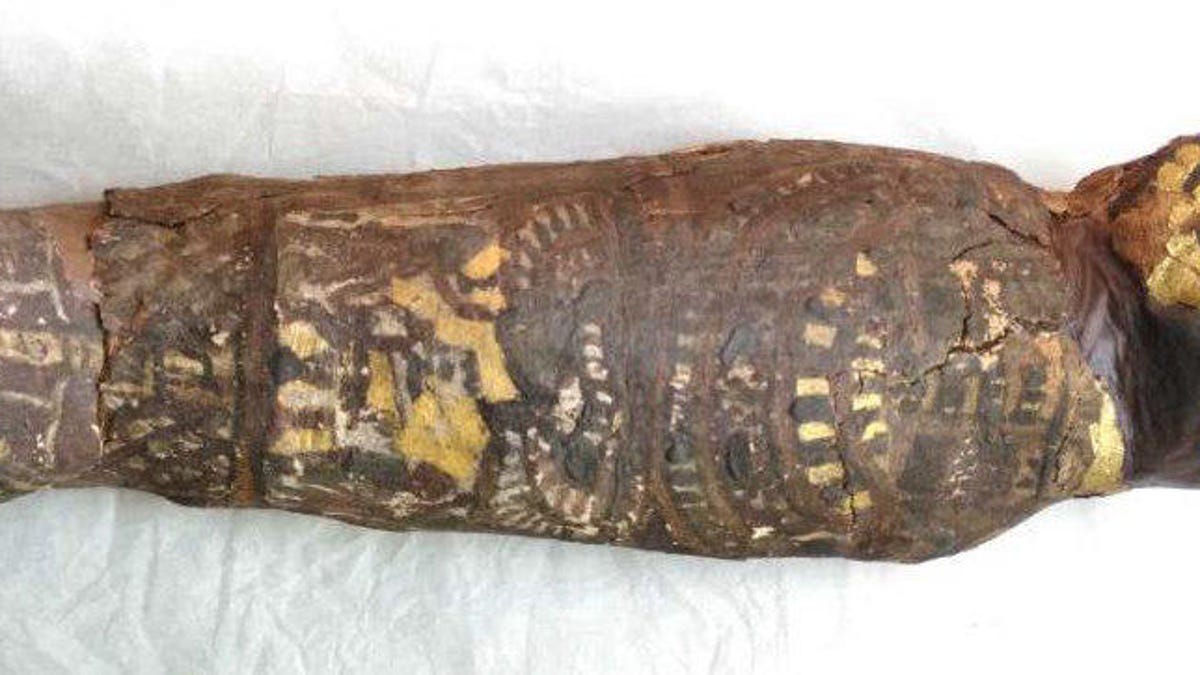Ancient Egyptian bird mummy turns out to be human
What scientists thought was a mummified hawk reveals the tragic tale of a child.
A mystery over 2,000 years old that scientists didn't even realize was a mystery is unveiling new layers.
The Maidstone Museum in the UK has an unusual Egyptian mummy dating from the Ptolemaic Period in its collection, where it was originally listed as a mummified hawk. A CT scan in 2016 revealed it was actually a human fetus, but the scan lacked details.
Bioarchaeologist Andrew Nelson of Western University in Canada undertook a much more in-depth study of the artifact with "the highest-resolution scan ever conducted of a fetal mummy." A research team then examined the results of the new micro-CT scan and found the remains of a male with well-formed fingers and toes, but severe abnormalities in the skull related to a rare condition called anencephaly.
"The whole top part of his skull isn't formed. The arches of the vertebrae of his spine haven't closed. His earbones are at the back of his head," Nelson says. The scientists says the fetus was stillborn at around 23 to 28 weeks.
The small body is hidden inside a plaster coffin decorated to look like a bird. Mummified animals aren't unusual. Archaeologists have uncovered ancient Egyptian mummies of snakes, cats, crocodiles and dogs. But only eight mummified human fetuses have been found.
Nelson's work answers some questions, but others remain. Western University asks why the cartonnage (plaster coffin) was decorated like a hawk and why museum curators failed to notice the feet at the bottom looked like sandals. The researchers are also curious if the mummification might have tied in with ancient Egyptian beliefs in the magical powers of fetuses.
"His birth and death would have been a tragic moment for the family," says the Maidstone Museum, "so this gesture of mummification is a truly poignant one."


